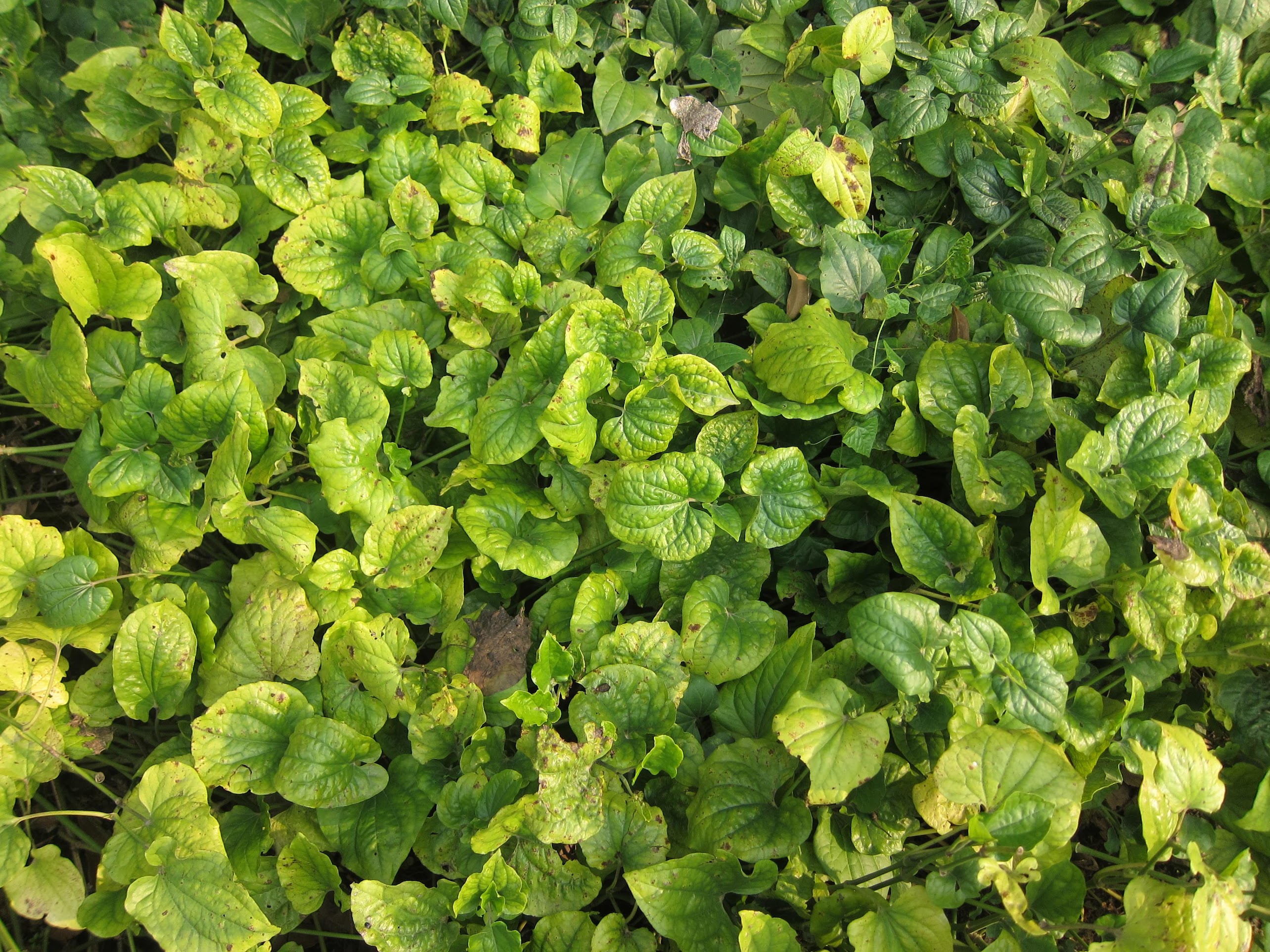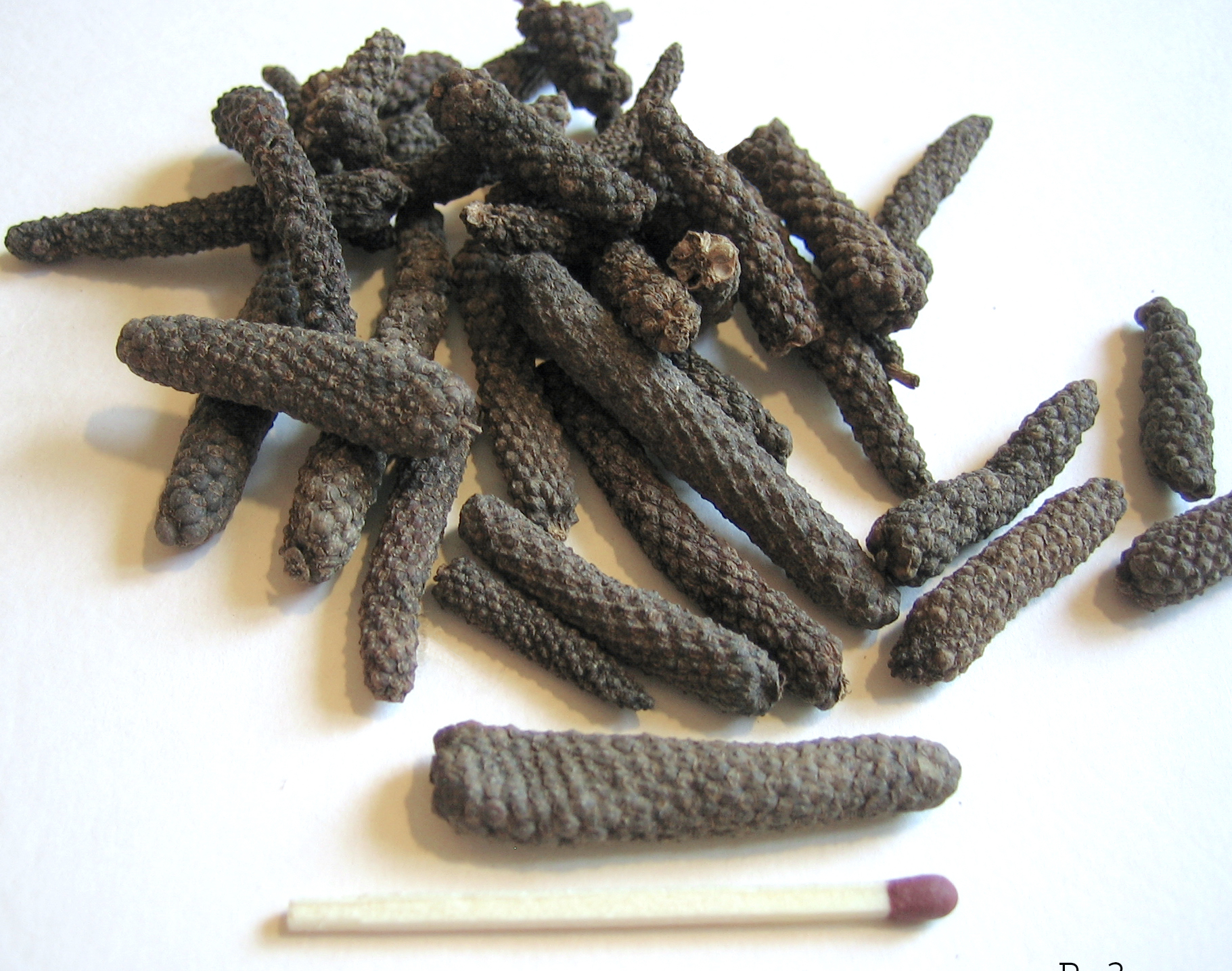long pepper on:
[Wikipedia]
[Google]
[Amazon]
Long pepper (''Piper longum''), sometimes called Indian long pepper or ''pippali'', is a flowering
 Use of long pepper occurred in
Use of long pepper occurred in


 Though often used in medieval times in spice mixes like "strong powder", long pepper is today a very rare ingredient in European cuisines, but it can still be found in
Though often used in medieval times in spice mixes like "strong powder", long pepper is today a very rare ingredient in European cuisines, but it can still be found in
vine
A vine is any plant with a growth habit of trailing or scandent (that is, climbing) stems, lianas, or runners. The word ''vine'' can also refer to such stems or runners themselves, for instance, when used in wicker work.Jackson; Benjamin; Da ...
in the family Piperaceae
The Piperaceae (), also known as the pepper family, are a large family (biology), family of flowering plants. The group contains roughly 3,600 currently accepted species in five genera. The vast majority of species can be found within the two mai ...
, cultivated for its fruit, which is usually dried and used as a spice
In the culinary arts, a spice is any seed, fruit, root, Bark (botany), bark, or other plant substance in a form primarily used for flavoring or coloring food. Spices are distinguished from herbs, which are the leaves, flowers, or stems of pl ...
and seasoning. Long pepper has a taste similar to, but sweeter and more pungent than, that of its close relative '' Piper nigrum'' – from which black, green and white pepper are obtained.
The fruit of the pepper consists of many minuscule fruits – each about the size of a poppy seed
Poppy seed is an oilseed obtained from the poppy plant (''Papaver somniferum''). The tiny, kidney-shaped seeds have been harvested from dried seed pods by various civilizations for thousands of years. It is still widely used in many countries, ...
– embedded in the surface of a flower spike that closely resembles a hazel tree catkin
A catkin or ament is a slim, cylindrical flower cluster (a spike), with inconspicuous or no petals, usually wind- pollinated ( anemophilous) but sometimes insect-pollinated (as in '' Salix''). It contains many, usually unisexual flowers, arra ...
. Like ''Piper nigrum'', the fruits contain the compound piperine, which contributes to their pungency. Another species of long pepper, '' Piper retrofractum'', is native to Java
Java is one of the Greater Sunda Islands in Indonesia. It is bordered by the Indian Ocean to the south and the Java Sea (a part of Pacific Ocean) to the north. With a population of 156.9 million people (including Madura) in mid 2024, proje ...
, Indonesia
Indonesia, officially the Republic of Indonesia, is a country in Southeast Asia and Oceania, between the Indian Ocean, Indian and Pacific Ocean, Pacific oceans. Comprising over List of islands of Indonesia, 17,000 islands, including Sumatra, ...
. The fruits of this plant are often confused with chili peppers, which belong to the genus ''Capsicum
''Capsicum'' () is a genus of flowering plants in the Solanum, nightshade family Solanaceae, native to the Americas, cultivated worldwide for their edible fruit, which are generally known as "peppers" or "capsicum". Chili peppers grow on five s ...
'', originally from the Americas.
History
 Use of long pepper occurred in
Use of long pepper occurred in Greece
Greece, officially the Hellenic Republic, is a country in Southeast Europe. Located on the southern tip of the Balkan peninsula, it shares land borders with Albania to the northwest, North Macedonia and Bulgaria to the north, and Turkey to th ...
in the sixth or fifth century BCE, though Hippocrates
Hippocrates of Kos (; ; ), also known as Hippocrates II, was a Greek physician and philosopher of the Classical Greece, classical period who is considered one of the most outstanding figures in the history of medicine. He is traditionally referr ...
discussed it as a medicament rather than a spice. Among the Greeks and Romans and prior to the Columbian exchange
The Columbian exchange, also known as the Columbian interchange, was the widespread transfer of plants, animals, and diseases between the New World (the Americas) in the Western Hemisphere, and the Old World (Afro-Eurasia) in the Eastern Hemis ...
, long pepper was a common spice
In the culinary arts, a spice is any seed, fruit, root, Bark (botany), bark, or other plant substance in a form primarily used for flavoring or coloring food. Spices are distinguished from herbs, which are the leaves, flowers, or stems of pl ...
.
The ancient history of long pepper is often interlinked with that of black pepper (''Piper nigrum''). Theophrastus
Theophrastus (; ; c. 371 – c. 287 BC) was an ancient Greek Philosophy, philosopher and Natural history, naturalist. A native of Eresos in Lesbos, he was Aristotle's close colleague and successor as head of the Lyceum (classical), Lyceum, the ...
distinguished the two in his work of botany. The Romans knew of both but their word for pepper usually meant black pepper. Pliny erroneously believed dried black pepper and long pepper came from the same plant.
Round, or black, pepper began to compete with long pepper in Europe from the twelfth century and had displaced it by the fourteenth. The quest for cheaper and more dependable sources of black pepper fueled the Age of Discovery
The Age of Discovery (), also known as the Age of Exploration, was part of the early modern period and overlapped with the Age of Sail. It was a period from approximately the 15th to the 17th century, during which Seamanship, seafarers fro ...
.
After the discovery of the American continents and of chili pepper
Chili peppers, also spelled chile or chilli ( ), are varieties of fruit#Berries, berry-fruit plants from the genus ''Capsicum'', which are members of the nightshade family Solanaceae, cultivated for their pungency. They are used as a spice to ...
, called by the Spanish '' pimiento'', employing their word for long pepper, the popularity of long pepper faded away. Chili peppers, some of which, when dried, are similar in shape and taste to long pepper, were easier to grow in a variety of locations more convenient to Europe. Today, long pepper is a rarity in general commerce.
Etymology
The word ''pepper'' itself is derived from the word for long pepper, Tamil word ''pippali''. The plant itself is a native of India. The word ''pepper'' in ''bell pepper'', referring to completely different plants under genus ''Capsicum
''Capsicum'' () is a genus of flowering plants in the Solanum, nightshade family Solanaceae, native to the Americas, cultivated worldwide for their edible fruit, which are generally known as "peppers" or "capsicum". Chili peppers grow on five s ...
'', is of the same etymology. That usage began in the 16th century.
Usage


 Though often used in medieval times in spice mixes like "strong powder", long pepper is today a very rare ingredient in European cuisines, but it can still be found in
Though often used in medieval times in spice mixes like "strong powder", long pepper is today a very rare ingredient in European cuisines, but it can still be found in India
India, officially the Republic of India, is a country in South Asia. It is the List of countries and dependencies by area, seventh-largest country by area; the List of countries by population (United Nations), most populous country since ...
n and Nepalese vegetable pickles, some North Africa
North Africa (sometimes Northern Africa) is a region encompassing the northern portion of the African continent. There is no singularly accepted scope for the region. However, it is sometimes defined as stretching from the Atlantic shores of t ...
n spice mixtures, and in Indonesia
Indonesia, officially the Republic of Indonesia, is a country in Southeast Asia and Oceania, between the Indian Ocean, Indian and Pacific Ocean, Pacific oceans. Comprising over List of islands of Indonesia, 17,000 islands, including Sumatra, ...
n and Malaysia
Malaysia is a country in Southeast Asia. Featuring the Tanjung Piai, southernmost point of continental Eurasia, it is a federation, federal constitutional monarchy consisting of States and federal territories of Malaysia, 13 states and thre ...
n cooking. It is readily available at Indian grocery stores, where it is usually labeled ''pippali''. Pippali is the main spice of '' nihari'', a popular meat stew from India, originating in the Indian metropolis of Lucknow
Lucknow () is the List of state and union territory capitals in India, capital and the largest city of the List of state and union territory capitals in India, Indian state of Uttar Pradesh and it is the administrative headquarters of the epon ...
, and one of the national dishes of Pakistan
Pakistan, officially the Islamic Republic of Pakistan, is a country in South Asia. It is the List of countries and dependencies by population, fifth-most populous country, with a population of over 241.5 million, having the Islam by country# ...
.
See also
* PiperlonguminineReferences
{{Authority control Piper (plant) Flora of the Indian subcontinent Monoamine oxidase inhibitors Spices Plants described in 1753 Indian spices